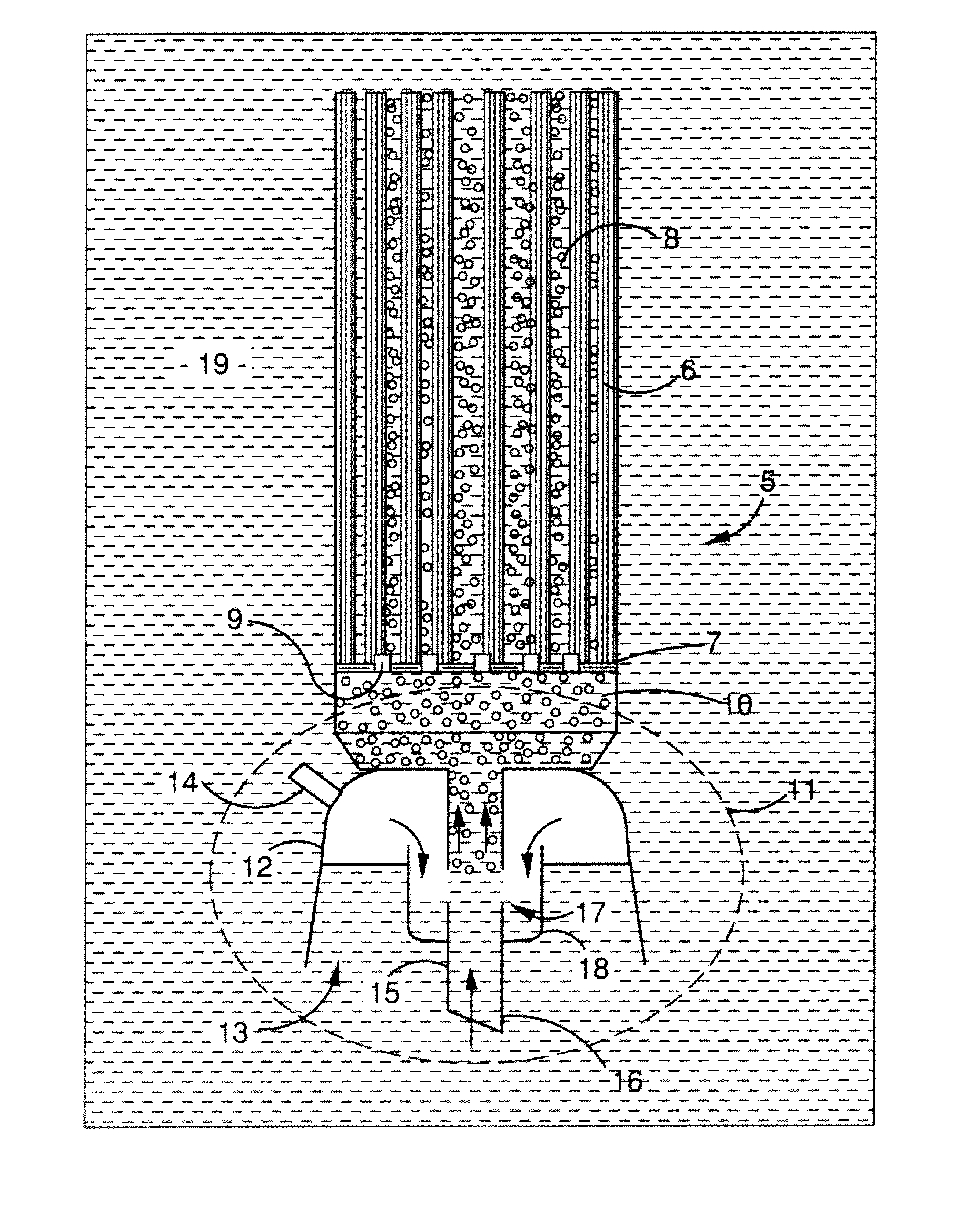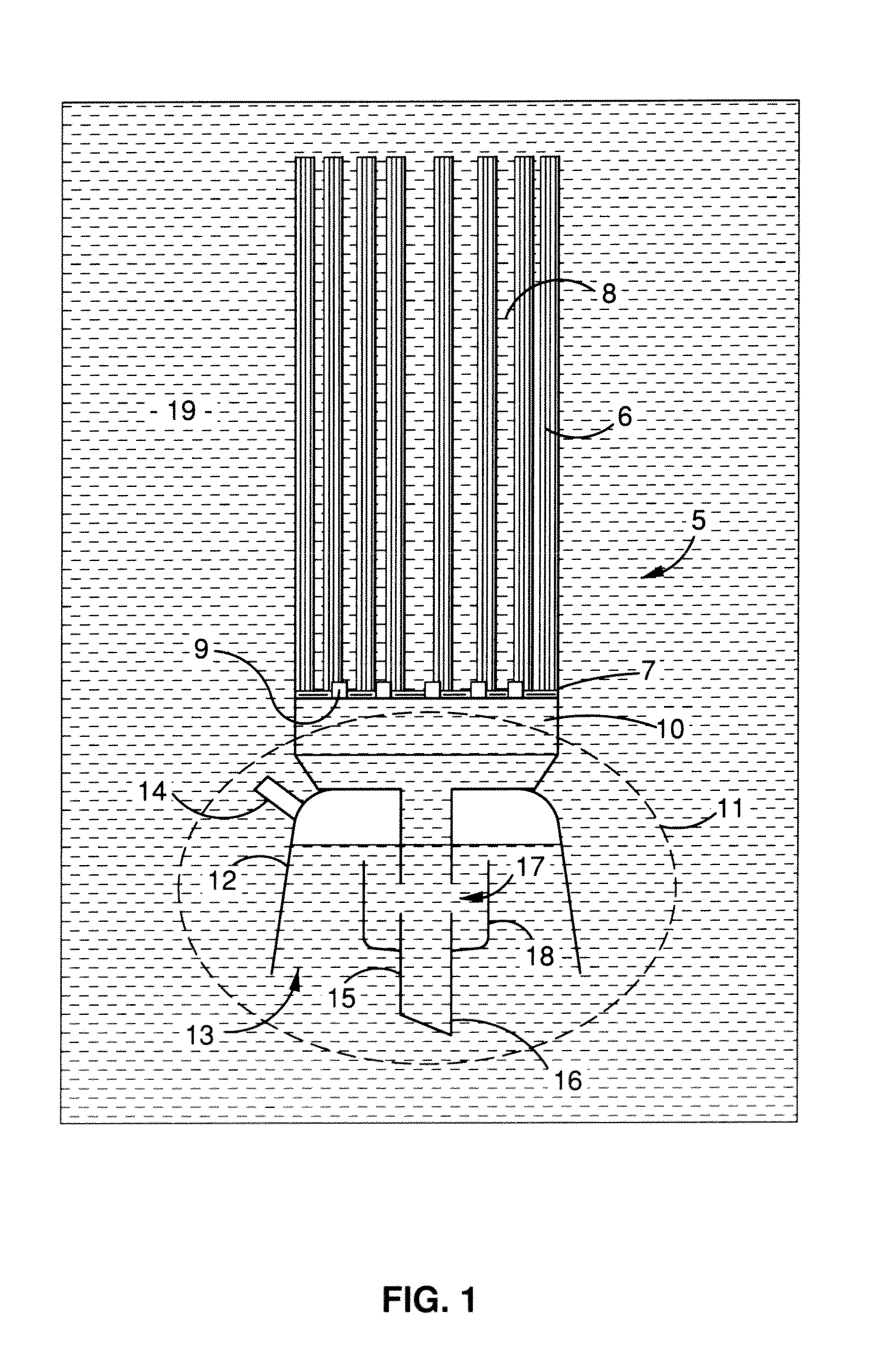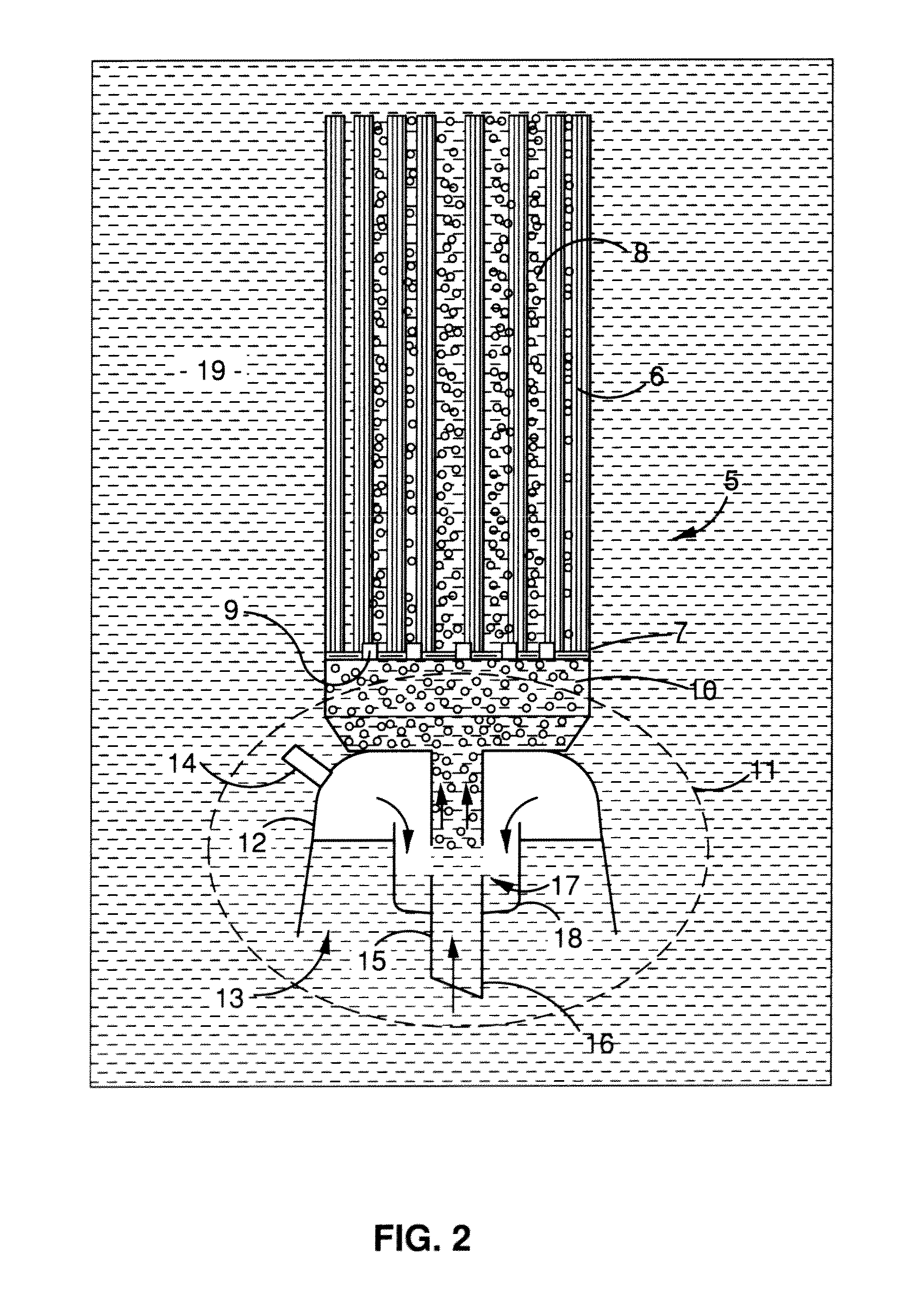Membrane cleaning with pulsed arilift pump
a technology of arilift pump and membrane, which is applied in the direction of membranes, filtration separation, separation processes, etc., can solve the problems of inability to maintain a constant flow of filtrate, inability to clean membranes, so as to reduce the residence time, improve the quality of filtrate, and improve the effect of filter quality
- Summary
- Abstract
- Description
- Claims
- Application Information
AI Technical Summary
Benefits of technology
Problems solved by technology
Method used
Image
Examples
examples
[0074]One typical membrane module is composed of hollow fiber membranes, has a total length of 1.6 m and a membrane surface area of 38 m2. A pulsed flow generating device was connected to the typical membrane module. A paddle wheel flowmeter was located at the lower end of the riser tube to monitor the pulsed liquid flow-rate lifted by gas. FIG. 10 shows a snapshot of the pulsed liquid flow-rate at a constant supply of gas flow at 7.8 Nm3 / hr. The snapshot shows that the liquid flow entering the module had a random or chaotic pattern between highs and lows. The frequency from low to high liquid flow-rates was in the range of about 1 to 4.5 seconds. The actual gas flow-rate released to the module was not measured because it was mixed with liquid, but the flow pattern was expected to be similar to the liquid flow—ranging between highs and lows in a chaotic nature.
[0075]A comparison of membrane cleaning effect via pulsed and normal airlift devices was conducted in a membrane bioreactor....
PUM
| Property | Measurement | Unit |
|---|---|---|
| diameter | aaaaa | aaaaa |
| diameter | aaaaa | aaaaa |
| inner diameter | aaaaa | aaaaa |
Abstract
Description
Claims
Application Information
 Login to View More
Login to View More - R&D
- Intellectual Property
- Life Sciences
- Materials
- Tech Scout
- Unparalleled Data Quality
- Higher Quality Content
- 60% Fewer Hallucinations
Browse by: Latest US Patents, China's latest patents, Technical Efficacy Thesaurus, Application Domain, Technology Topic, Popular Technical Reports.
© 2025 PatSnap. All rights reserved.Legal|Privacy policy|Modern Slavery Act Transparency Statement|Sitemap|About US| Contact US: help@patsnap.com



